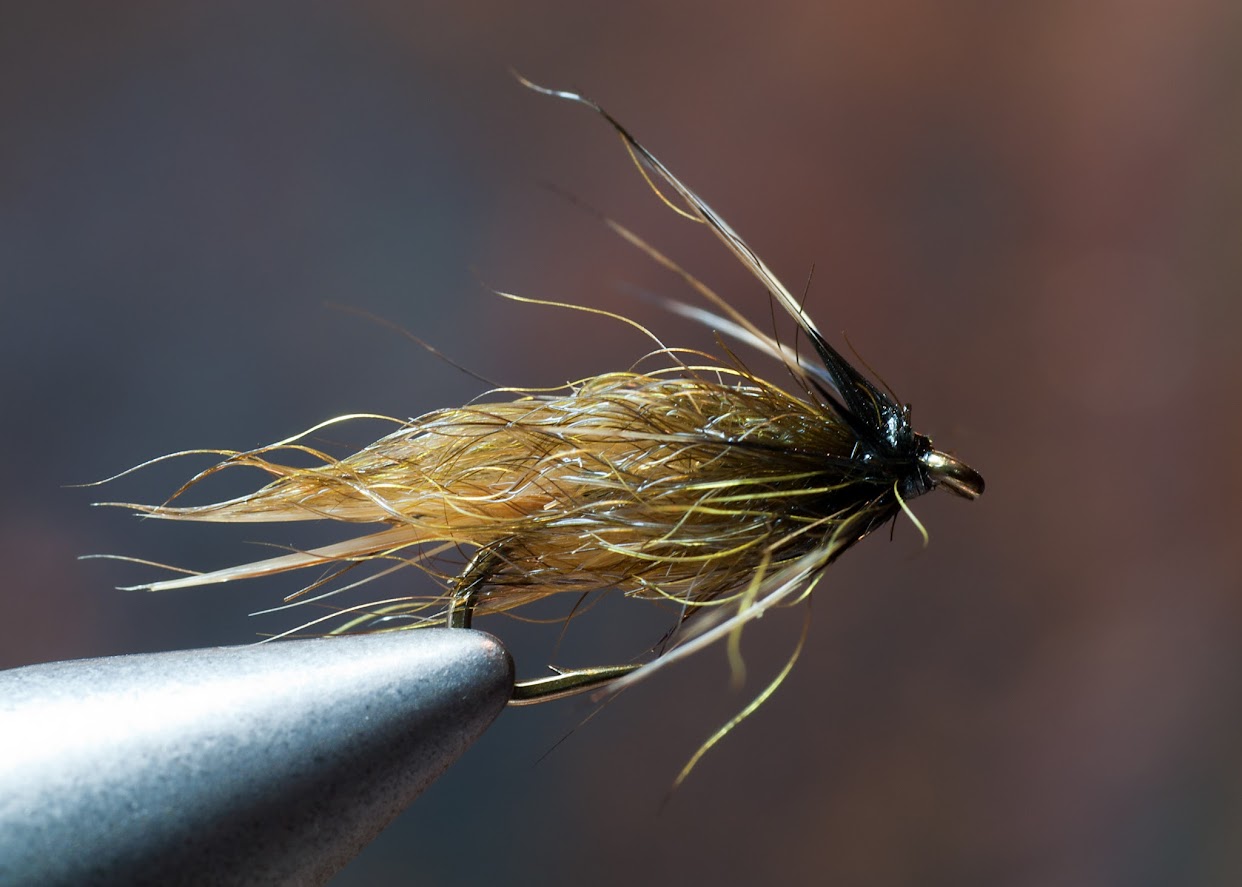This pattern is for swinging. It prefers fast, shallower riffles. It thrives in that spot just when a nice run is beginning to become the riffle and the water has started to accelerate and become shallower. The velocity needs to be enough to keep the fibers of the construction collapsed around the body. It fishes very well in the #10-#14 size range. The woodchuck hair is a very underutilized material in my opinion and is wonderfully translucent when wet. It is an interesting hair but can be limited in use. It does not make the best dubbing material unless used as below.
I have played with other colors but this is hands down the most productive. I still don't know what the fish are taking it for. It doesn't seem to be hatch specific at all. I used to think caddis but I'm not sold on that idea. It seems to work anytime, not specific to any hatch, but like I mentioned before more specific to water type.
The Good Luck Chuck.

Hook: 2x-3x long heavy nymph hook
Thread: black
Hackle: speckled badger rooster or Coq de Leon for larger sizes
Tail: woodchuck guard hair tips, bleached
Body: woodchuck hair, bleached at the rear, olive in the front (This hair is the medium length fibers from a woodchuck skin. Woodchuck has guard hairs, a medium length fine textured hair and an undercoat that is woolen like. The hair you want is the hair that is seen as the white band on a natural skin. Separate out the medium length fibers and keep the tips aligned. These will be placed and spun in a dubbing loop to form the body. One of those specific hair clips or paper bundle clips help here. The hair fibers should be long enough to reach the rear of the hook and into the tail a bit.)
The patten will be very scraggly and seem overly full. It looks too full and like it will get in the way of the hook point. This has never been an issue. Strikes are strong and I have never felt like this has been a problem. The hair is not as course as it looks in the photo and will collapse down nicely. Below is the same fly soaked. You can see the form it takes while swinging and the color change that occurs. It takes on a very nice form, with a translucent depth and an attractive food stuff color. Again, I'm not sure what it is taken for. Originally when I would tie it in sizes #6-10 (which I still do) for steelhead I was thinking October Caddis. That may be the case. By the way, I catch a lot of trout on those larger sizes as well when I'm swinging it for steelhead.

